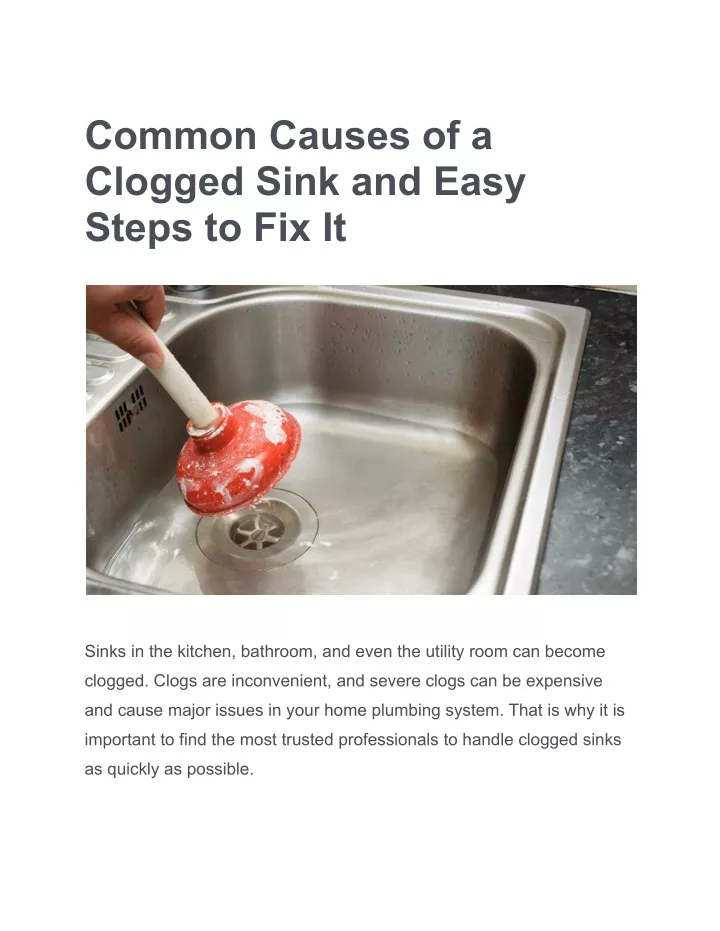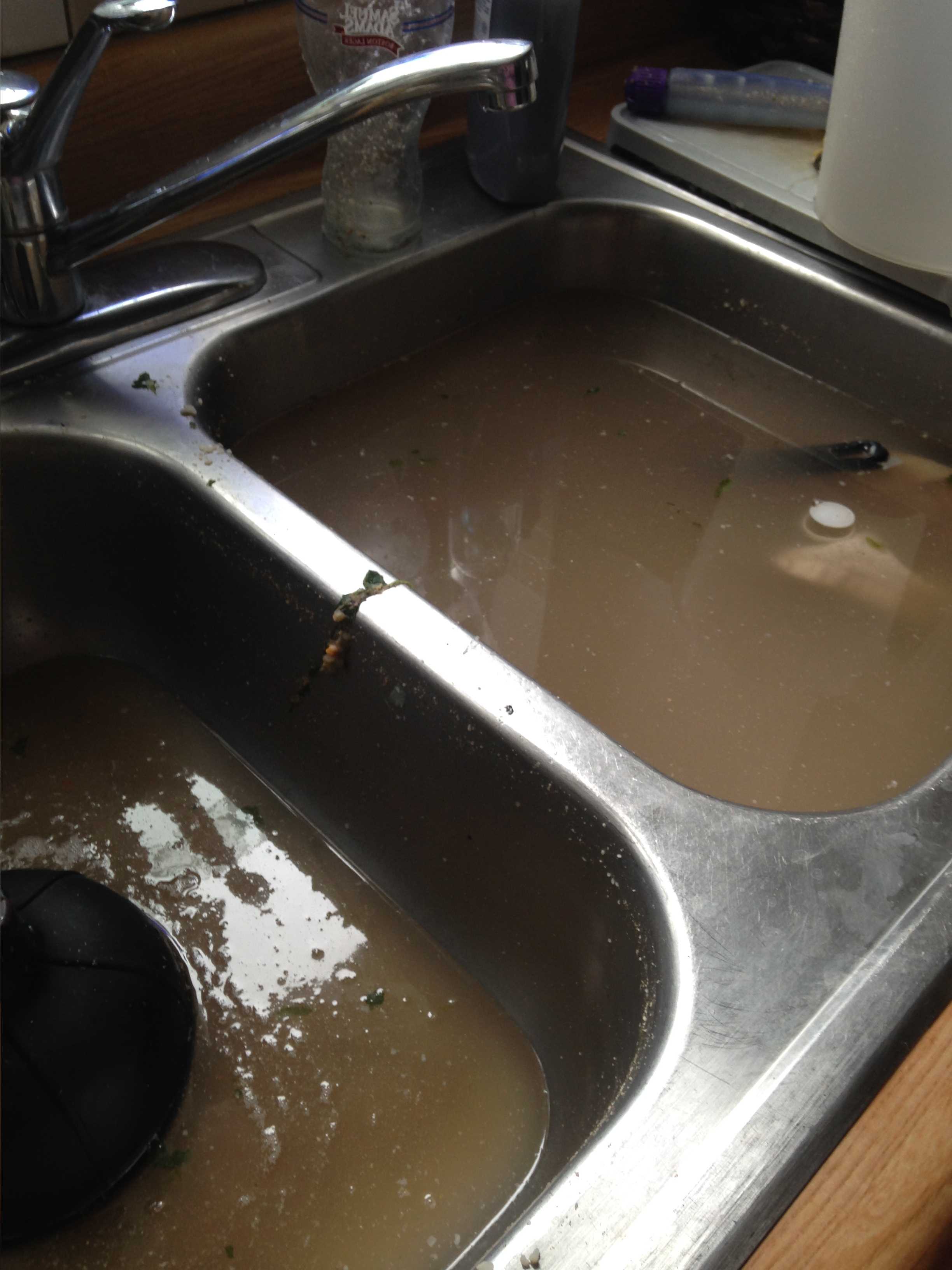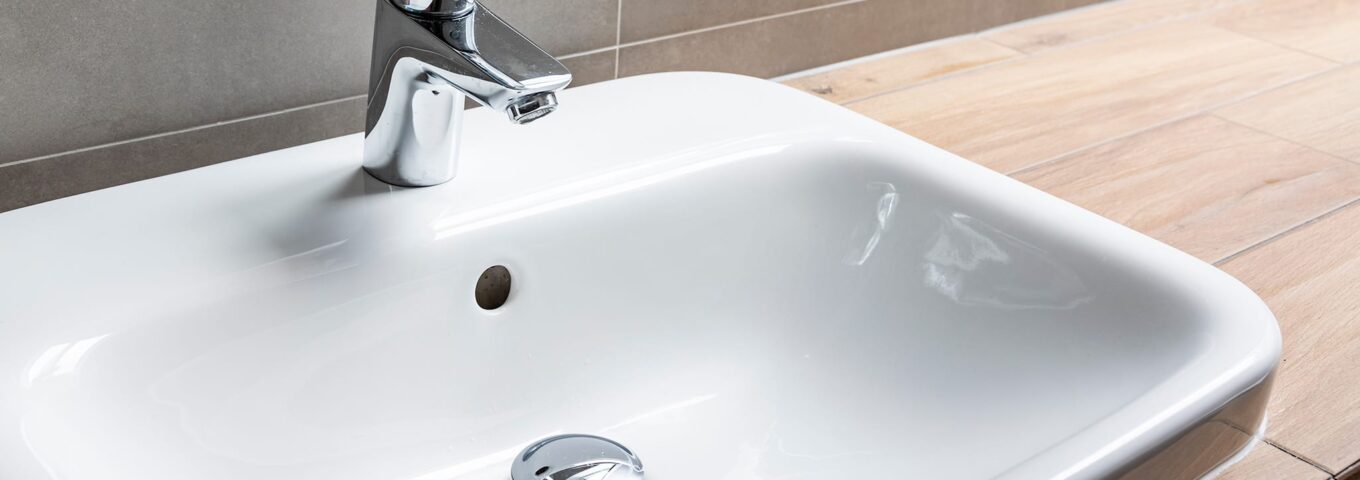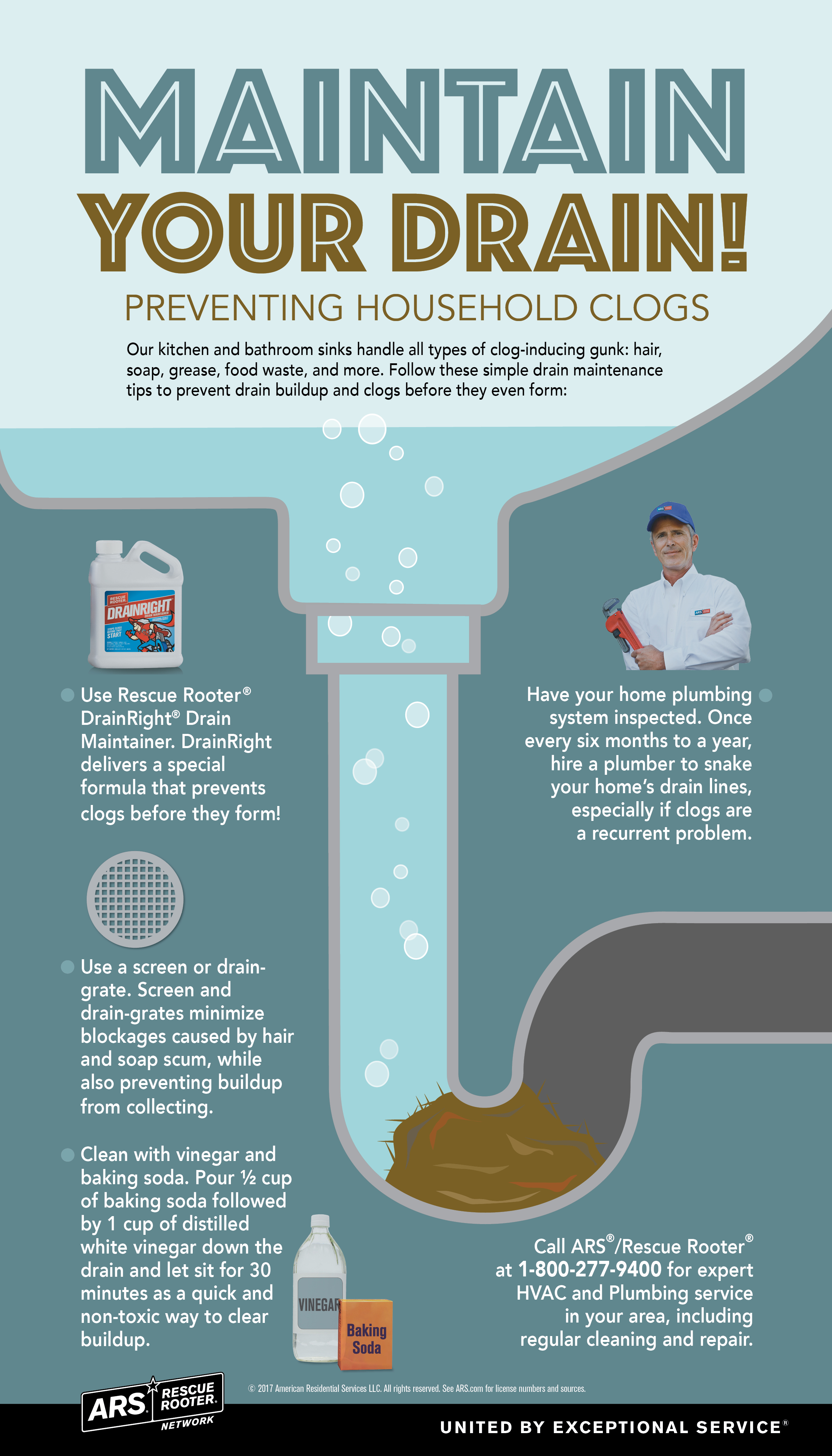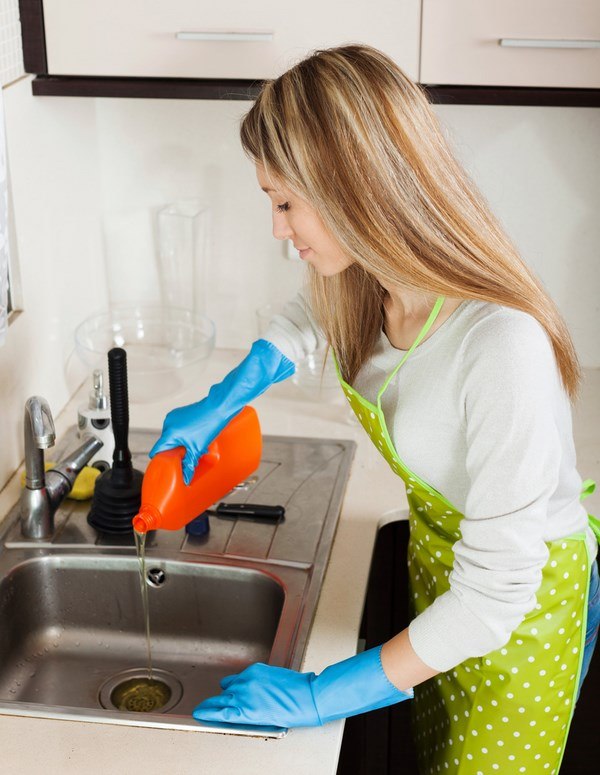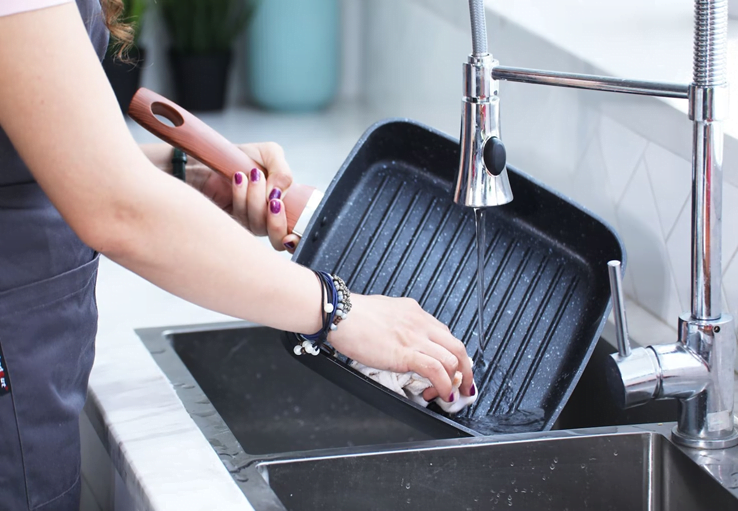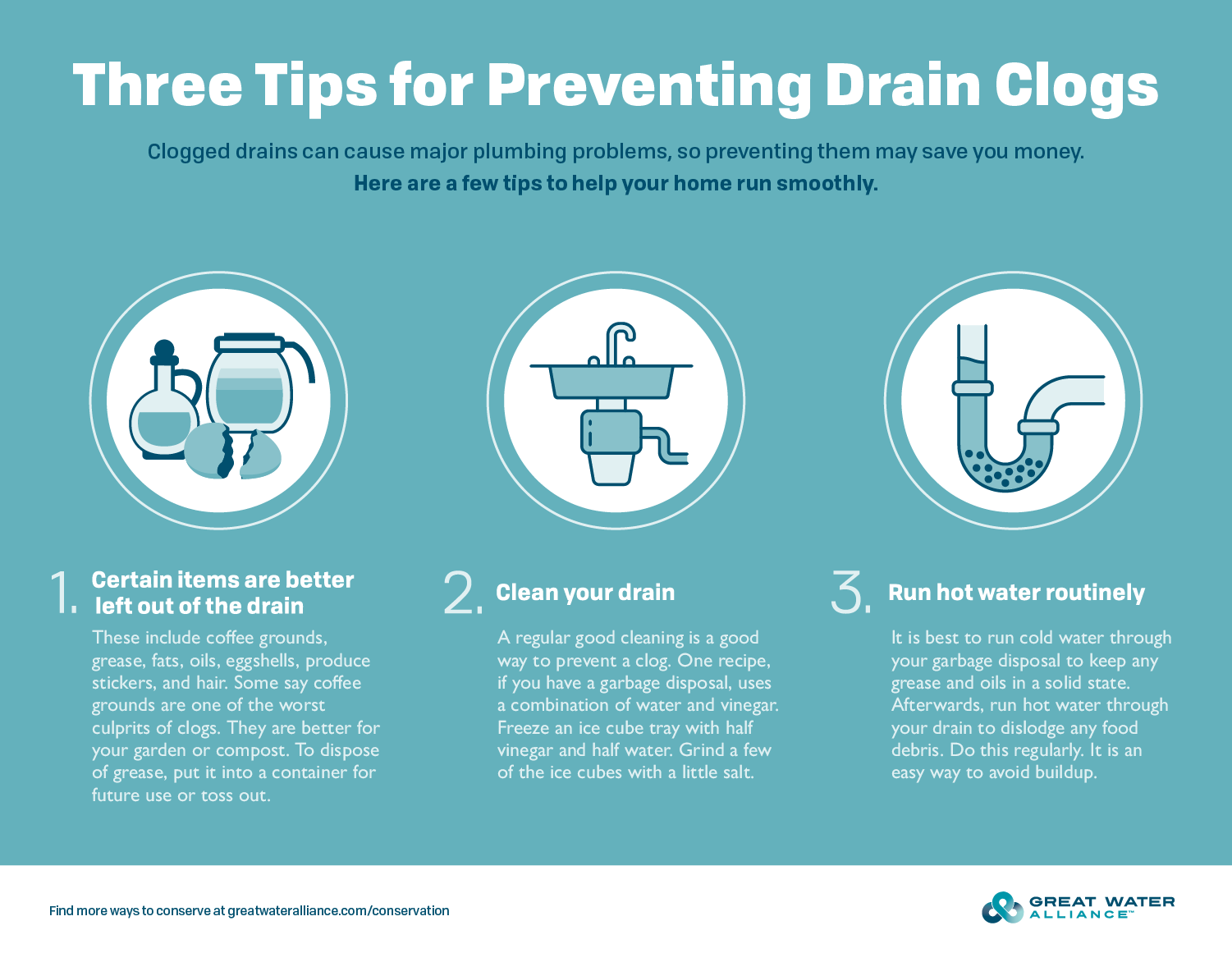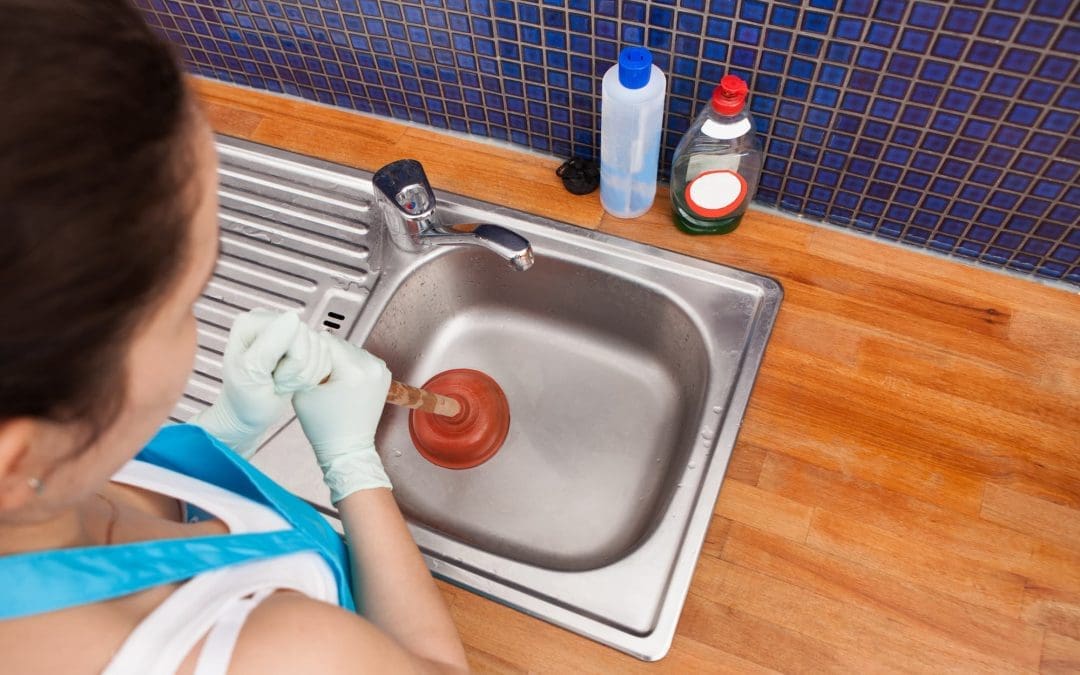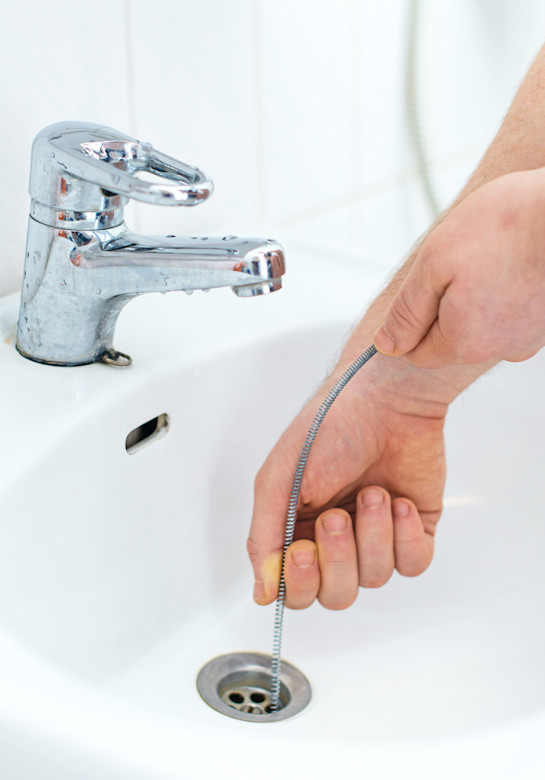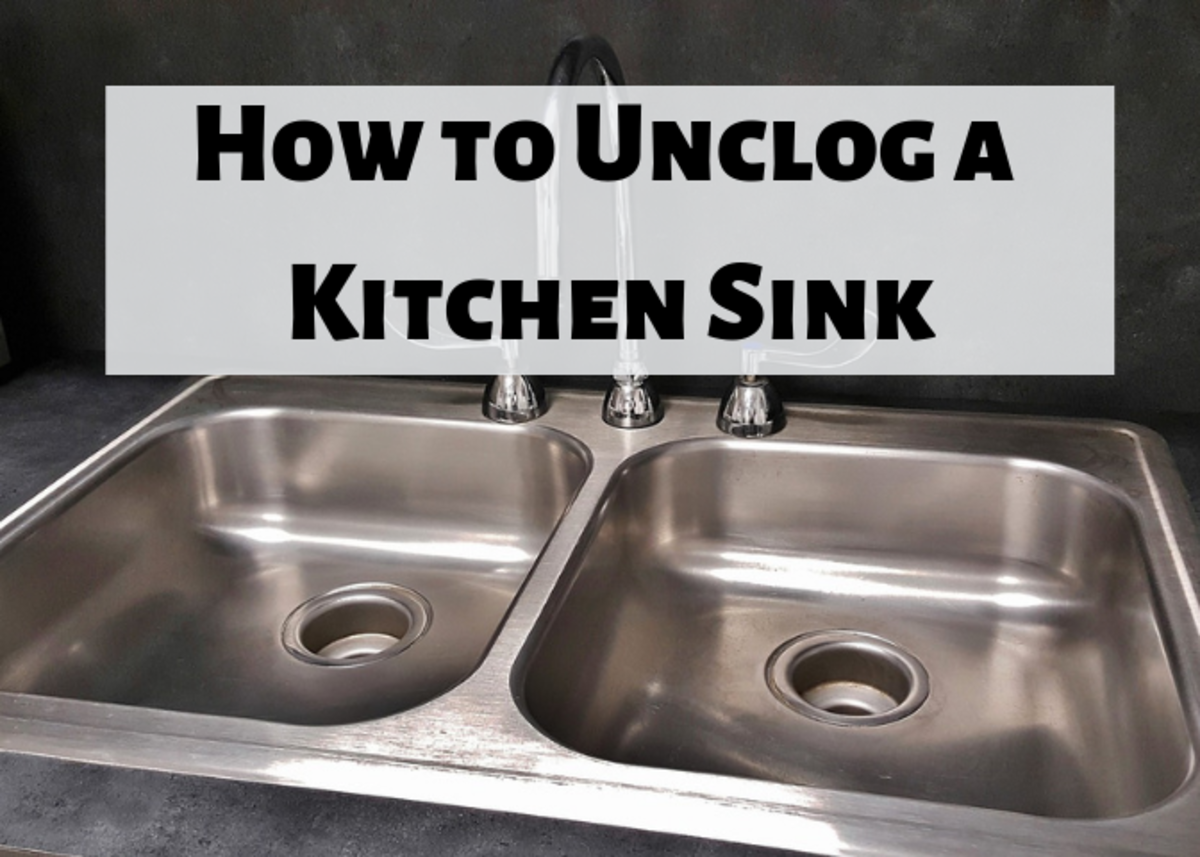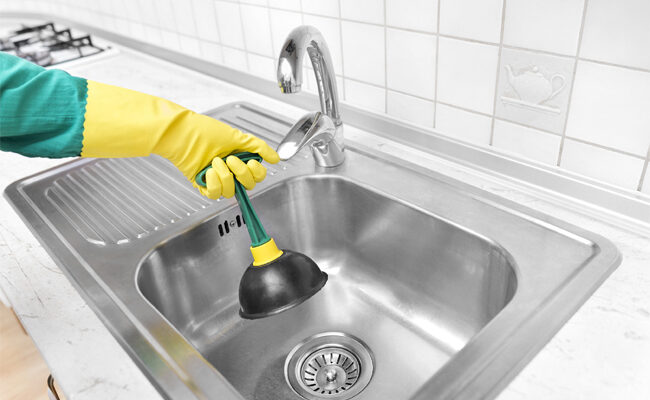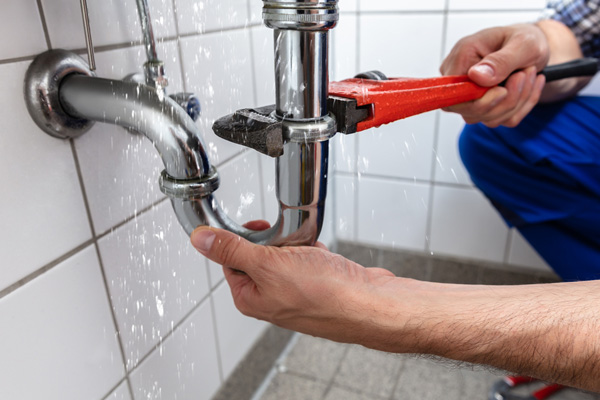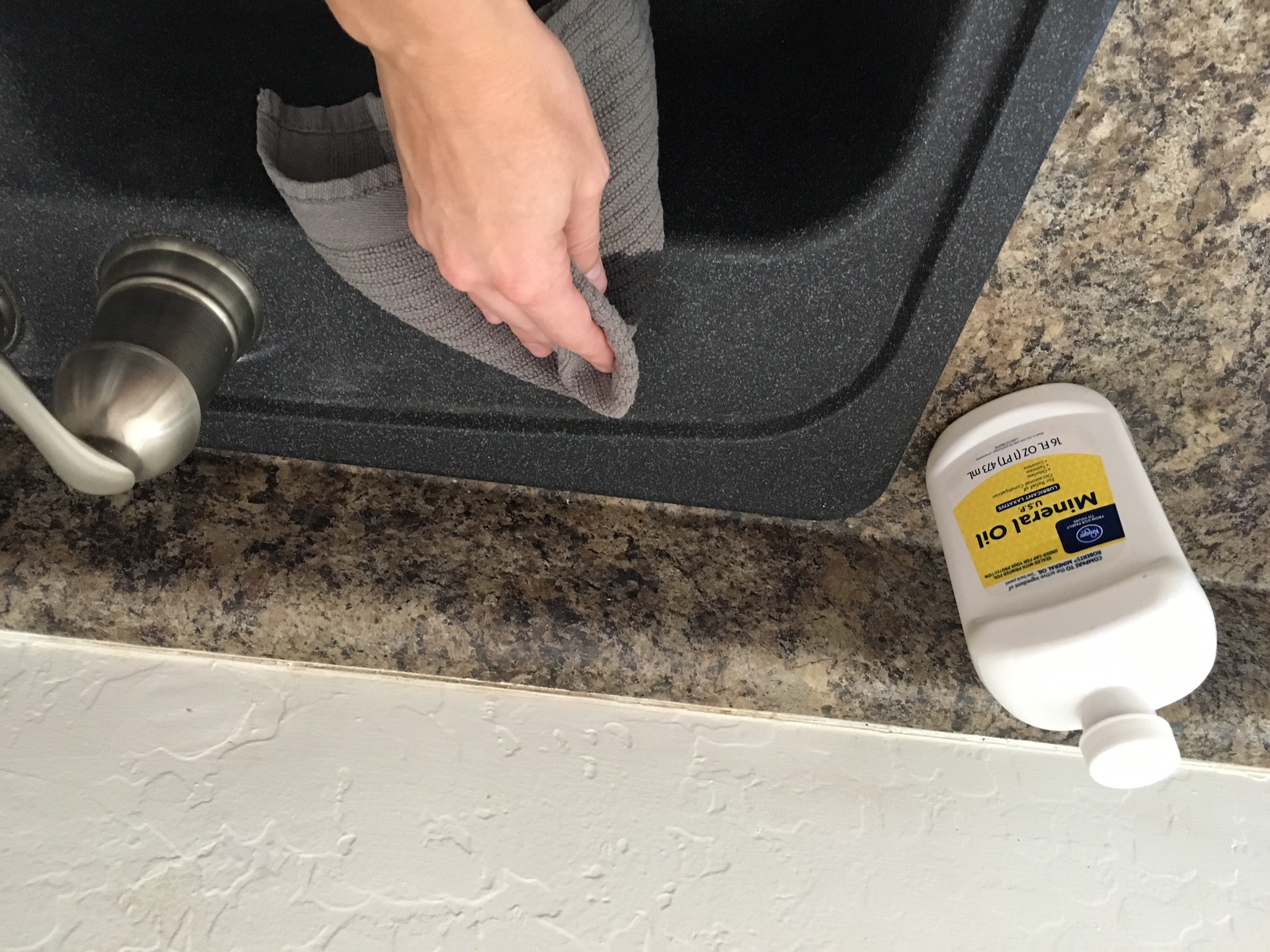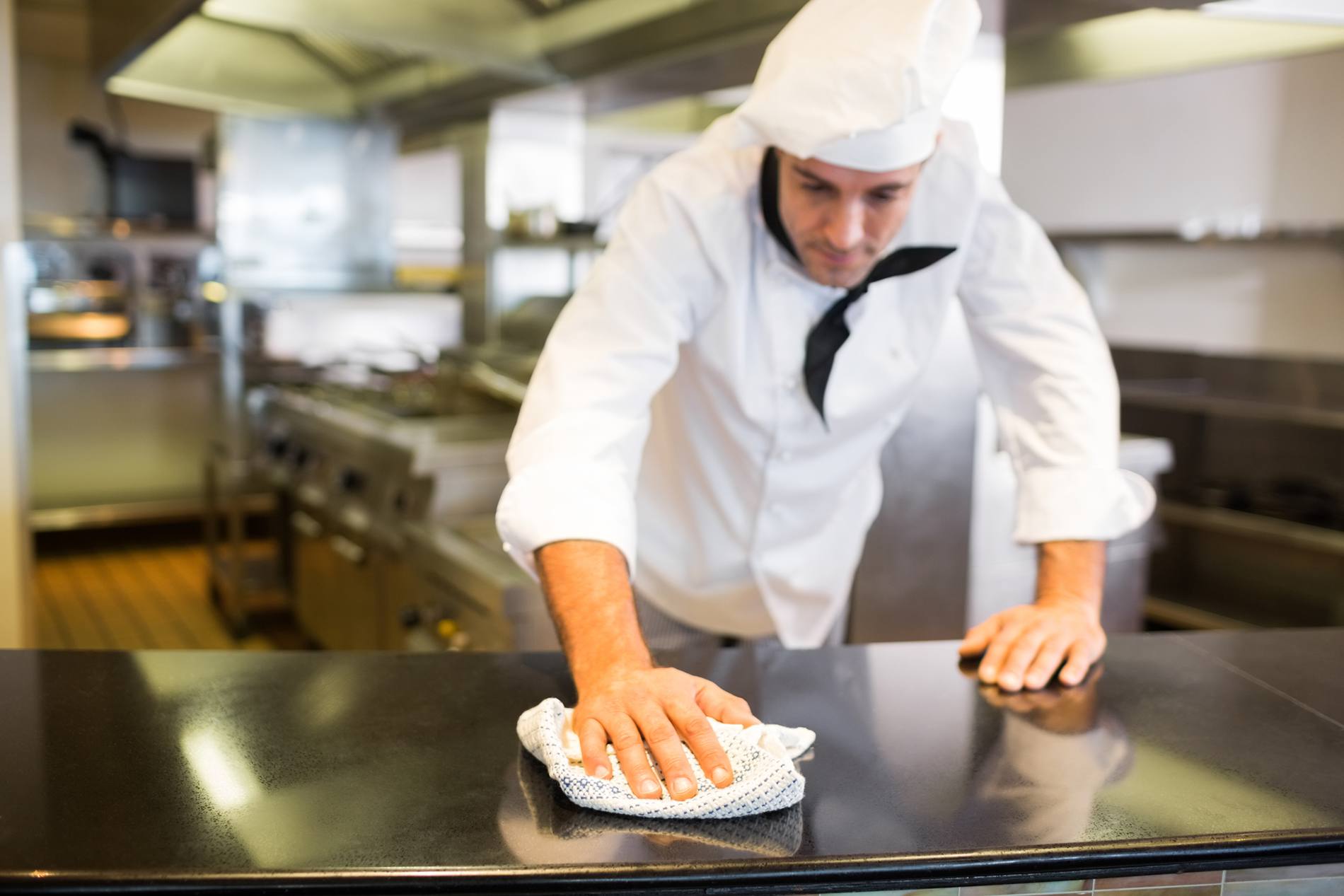How to Unclog a Kitchen Sink with Standing Water
If you're dealing with a clogged kitchen sink that has standing water, it can be frustrating and inconvenient. But before you call a plumber, there are some simple steps you can take to unclog your sink and get the water flowing again. Here are 10 ways to unclog a kitchen sink with standing water.
How to Unclog a Garbage Disposal
If your kitchen sink has a garbage disposal, it's important to address the clog in a different way than if you have a regular sink. First, make sure the disposal is turned off and unplugged. Then, try using a plunger or a drain snake to remove the clog. If that doesn't work, you may need to manually remove the clog from the disposal. Always use caution when working with a garbage disposal to prevent injury.
DIY Methods for Unclogging a Kitchen Sink
If you prefer to try some do-it-yourself methods before calling a professional, there are a few options to try. One method is to pour boiling water down the drain to help break up the clog. You can also try a mixture of baking soda and vinegar, which can help dissolve grease and other substances that may be causing the clog.
Using a Plunger to Unclog a Kitchen Sink
A plunger is a common tool for unclogging sinks and toilets, and it can also be effective for a kitchen sink with standing water. Make sure there is enough water in the sink to cover the plunger, and then create a seal around the drain with the plunger. Push and pull the plunger to create suction and hopefully dislodge the clog.
Using a Drain Snake to Unclog a Kitchen Sink
If a plunger isn't doing the trick, you may need to use a drain snake. This tool is designed to go deep into the pipes and push out any debris that is causing the clog. Insert the drain snake into the drain and turn the handle to push it further into the pipes. Once you feel resistance, rotate the snake to help break up the clog.
Using Baking Soda and Vinegar to Unclog a Kitchen Sink
If you want to try a natural method for unclogging your kitchen sink, you can use a combination of baking soda and vinegar. First, pour a cup of baking soda down the drain, followed by a cup of vinegar. The mixture will start to fizz and can help break up the clog. Let it sit for a few minutes before pouring boiling water down the drain.
Common Causes of a Clogged Kitchen Sink
To prevent future clogs, it's important to understand the common causes of a clogged kitchen sink. Some of the most common reasons include food debris, grease buildup, and foreign objects that accidentally get washed down the drain. To avoid these issues, make sure to properly dispose of food scraps and avoid pouring grease down the drain.
Preventing Clogs in Your Kitchen Sink
The best way to deal with a clogged kitchen sink is to prevent it from happening in the first place. This means being mindful of what you put down the drain and taking steps to maintain a clean and clear sink. Use a drain stopper to catch any food debris and regularly clean your sink and garbage disposal to remove any buildup.
When to Call a Professional for Kitchen Sink Clogs
If you've tried DIY methods and the clog is still persistent, it may be time to call a professional plumber. They have the tools and expertise to handle tough clogs and can help determine if there are any underlying issues causing the clog. It's also important to call a professional if you notice multiple drains in your home are clogged at the same time, as this could indicate a larger plumbing issue.
How to Maintain a Clean and Clear Kitchen Sink
To keep your kitchen sink in top condition, it's important to maintain a regular cleaning routine. This includes wiping down your sink after each use, regularly using a drain cleaner to prevent buildup, and avoiding putting anything down the drain that could cause a clog. By taking these simple steps, you can prevent clogs and keep your kitchen sink working properly for years to come.
Why a Clogged Kitchen Sink Garbage Disposal Can Cause Standing Water

The Importance of a Well-Functioning Garbage Disposal in Your Kitchen
 Having a functional garbage disposal in your kitchen is essential for maintaining a clean and efficient space.
Kitchen sink garbage disposals
are designed to grind up food scraps and other waste, preventing them from clogging your pipes and causing unpleasant odors. However, when your garbage disposal becomes clogged, it can lead to standing water in your sink, creating a messy and inconvenient situation. In this article, we will discuss the
causes of a clogged kitchen sink garbage disposal
and how to
unclog
it to get rid of the standing water.
Having a functional garbage disposal in your kitchen is essential for maintaining a clean and efficient space.
Kitchen sink garbage disposals
are designed to grind up food scraps and other waste, preventing them from clogging your pipes and causing unpleasant odors. However, when your garbage disposal becomes clogged, it can lead to standing water in your sink, creating a messy and inconvenient situation. In this article, we will discuss the
causes of a clogged kitchen sink garbage disposal
and how to
unclog
it to get rid of the standing water.
Common Causes of a Clogged Kitchen Sink Garbage Disposal
 There are several reasons why your kitchen sink garbage disposal may become clogged, resulting in standing water. One of the most common causes is
improper usage
of the disposal. Many people make the mistake of putting large chunks of food or non-food items down the disposal, which can cause it to jam and not function properly. Additionally, pouring grease or oil down the disposal can also lead to clogs as it solidifies and sticks to the blades and pipes.
Another common cause of a clogged garbage disposal is
lack of maintenance
. Over time, food particles and debris can build up in the disposal, causing it to become less effective at grinding up waste. This can eventually lead to clogs and standing water in your sink.
Regularly cleaning and maintaining
your garbage disposal can help prevent these issues.
There are several reasons why your kitchen sink garbage disposal may become clogged, resulting in standing water. One of the most common causes is
improper usage
of the disposal. Many people make the mistake of putting large chunks of food or non-food items down the disposal, which can cause it to jam and not function properly. Additionally, pouring grease or oil down the disposal can also lead to clogs as it solidifies and sticks to the blades and pipes.
Another common cause of a clogged garbage disposal is
lack of maintenance
. Over time, food particles and debris can build up in the disposal, causing it to become less effective at grinding up waste. This can eventually lead to clogs and standing water in your sink.
Regularly cleaning and maintaining
your garbage disposal can help prevent these issues.
How to Unclog a Kitchen Sink Garbage Disposal
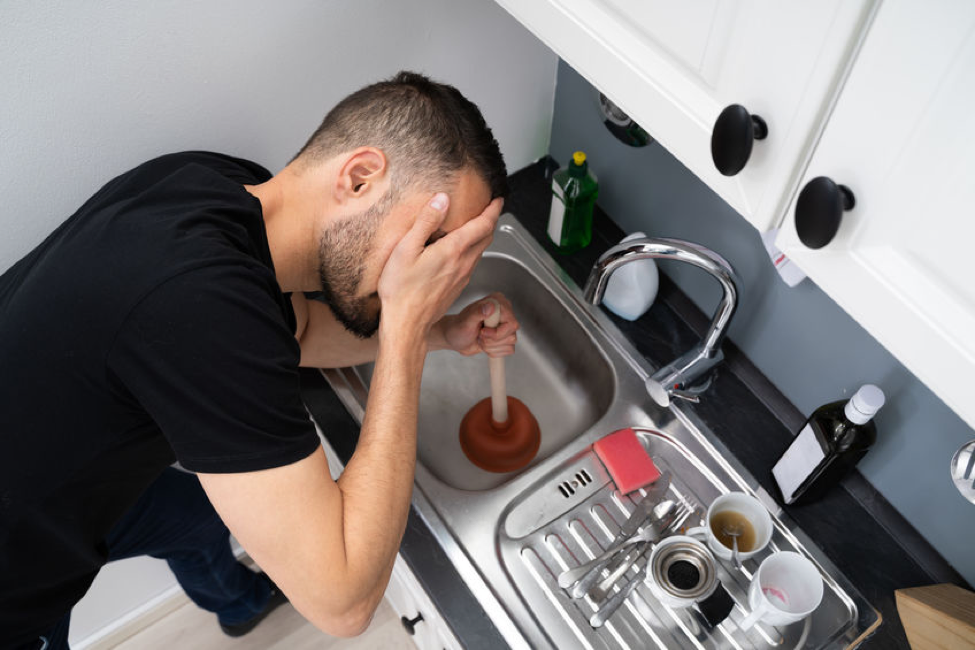 If you have standing water in your sink due to a clogged garbage disposal, there are a few steps you can take to
unclog
it. First,
turn off the power
to the disposal to avoid any accidents. Then, using a pair of tongs or pliers, try to
remove any visible debris
from the disposal. You can also try
pouring hot water
down the drain to help loosen any clogs.
If these methods do not work, you may need to use a
plunger
to dislodge the clog. Place the plunger over the drain and pump it up and down several times to create suction. This can help to break up and remove the clog. For tougher clogs, you may need to use a
plumbing snake
or call a professional
plumber
for assistance.
If you have standing water in your sink due to a clogged garbage disposal, there are a few steps you can take to
unclog
it. First,
turn off the power
to the disposal to avoid any accidents. Then, using a pair of tongs or pliers, try to
remove any visible debris
from the disposal. You can also try
pouring hot water
down the drain to help loosen any clogs.
If these methods do not work, you may need to use a
plunger
to dislodge the clog. Place the plunger over the drain and pump it up and down several times to create suction. This can help to break up and remove the clog. For tougher clogs, you may need to use a
plumbing snake
or call a professional
plumber
for assistance.
Preventing Future Clogs in Your Kitchen Sink Garbage Disposal
 To avoid dealing with standing water in your kitchen sink, there are a few preventative measures you can take. First, always
run water
down the disposal while it is in use to help flush out any debris.
Avoid putting large or hard items
down the disposal, and be sure to
dispose of grease and oil
properly instead of pouring it down the drain.
In addition,
regularly cleaning and maintaining
your garbage disposal can help prevent clogs from occurring. You can use a mixture of
baking soda and vinegar
to clean and deodorize the disposal, or use specialized disposal cleaning products.
In conclusion, a clogged kitchen sink garbage disposal can cause standing water and disrupt the functionality of your kitchen. By understanding the common causes of clogs and how to properly unclog and prevent them, you can keep your kitchen sink and garbage disposal working efficiently. Remember to always practice proper usage and maintenance of your garbage disposal to avoid any future issues.
To avoid dealing with standing water in your kitchen sink, there are a few preventative measures you can take. First, always
run water
down the disposal while it is in use to help flush out any debris.
Avoid putting large or hard items
down the disposal, and be sure to
dispose of grease and oil
properly instead of pouring it down the drain.
In addition,
regularly cleaning and maintaining
your garbage disposal can help prevent clogs from occurring. You can use a mixture of
baking soda and vinegar
to clean and deodorize the disposal, or use specialized disposal cleaning products.
In conclusion, a clogged kitchen sink garbage disposal can cause standing water and disrupt the functionality of your kitchen. By understanding the common causes of clogs and how to properly unclog and prevent them, you can keep your kitchen sink and garbage disposal working efficiently. Remember to always practice proper usage and maintenance of your garbage disposal to avoid any future issues.




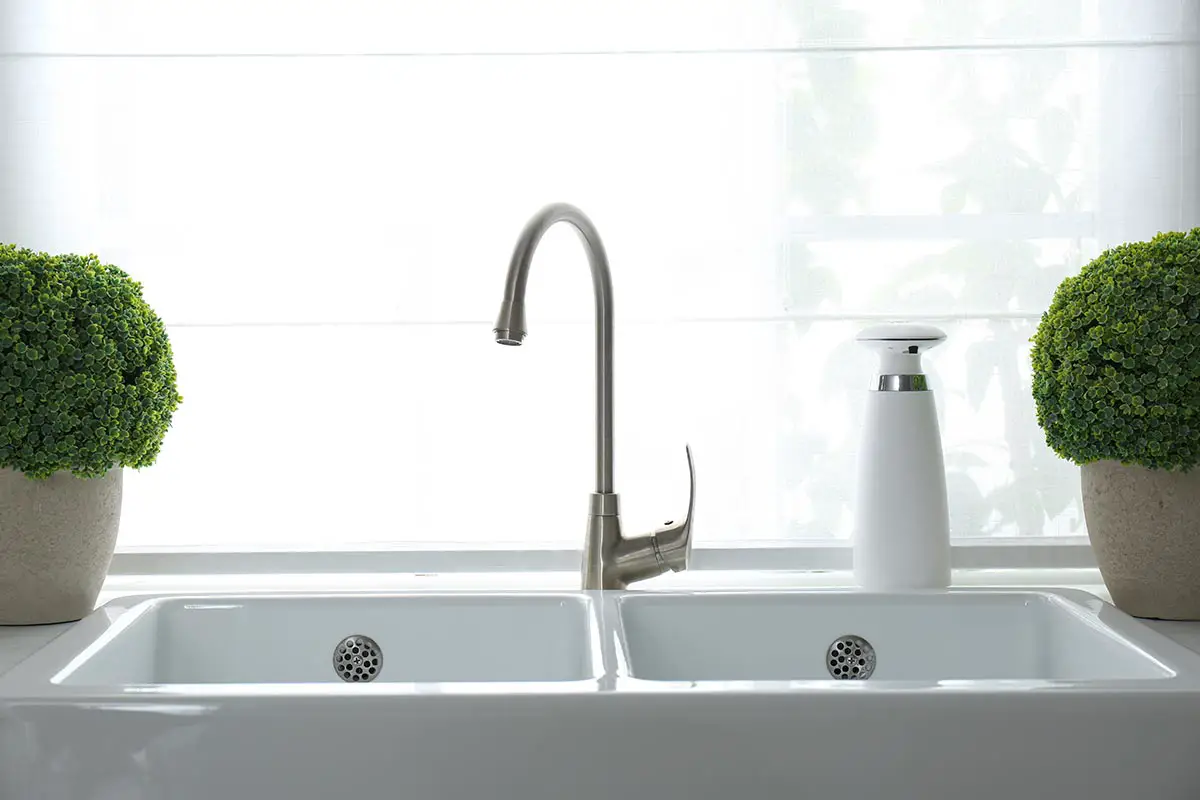

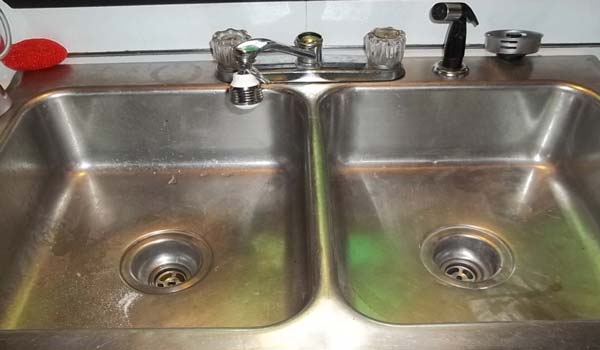




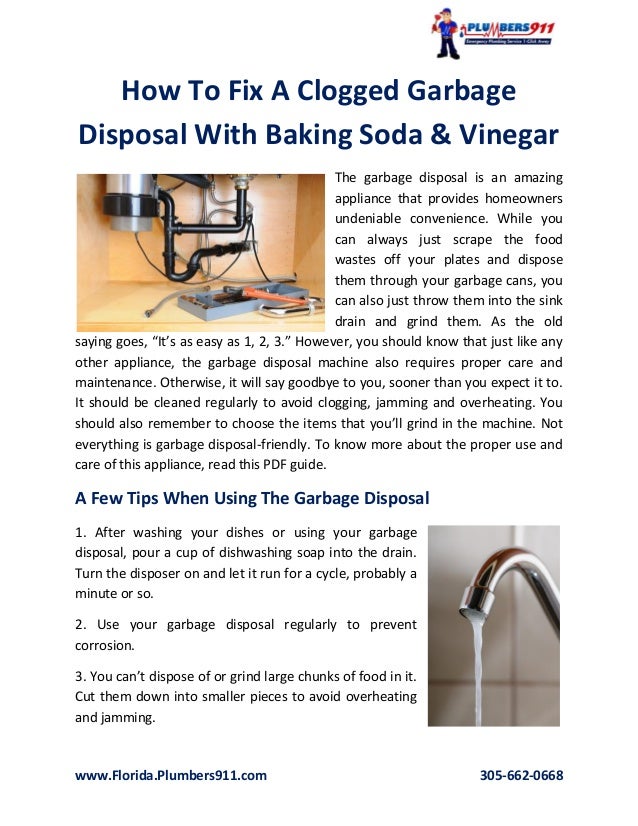





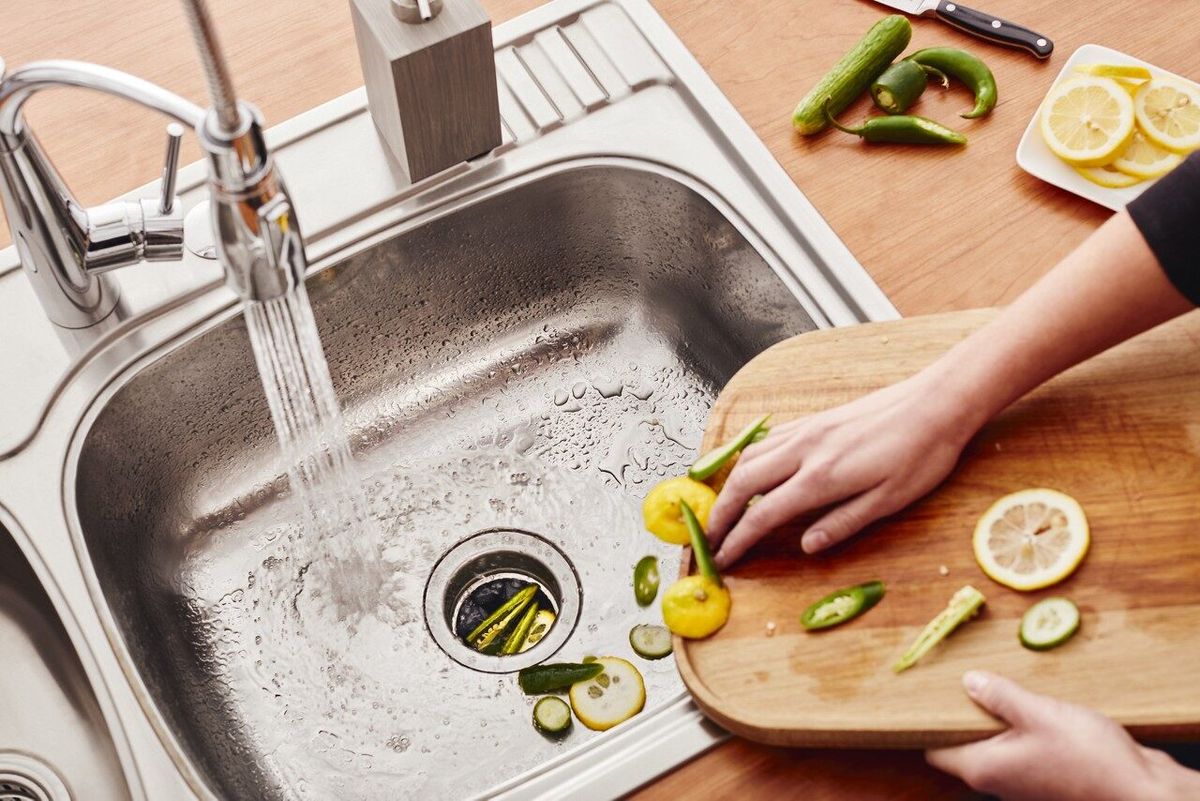


/plumber-unclogging-kitchen-sink-169270382-5797a9355f9b58461f27f024.jpg)


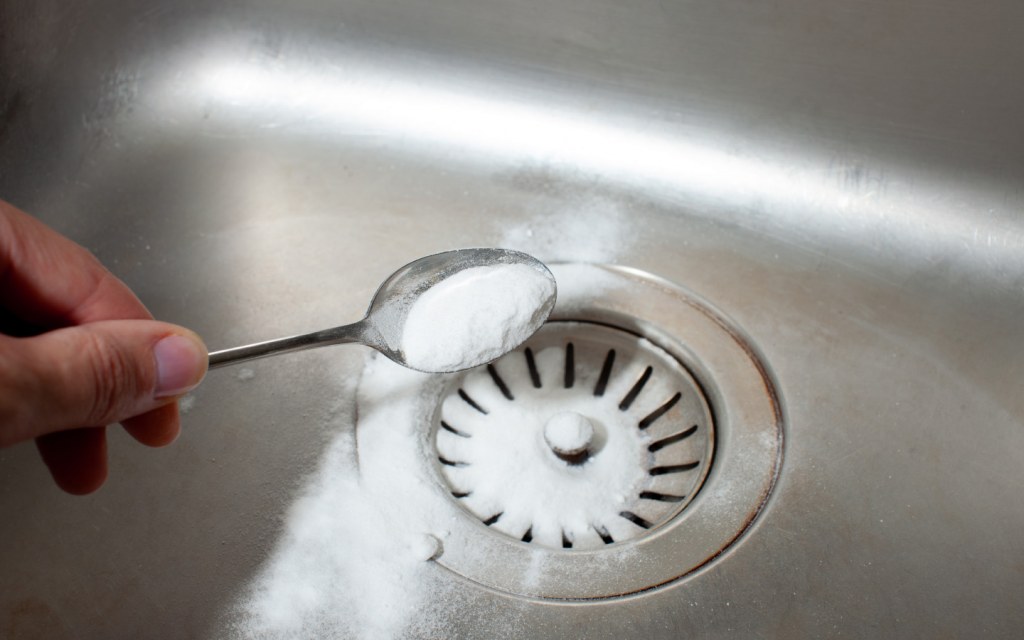





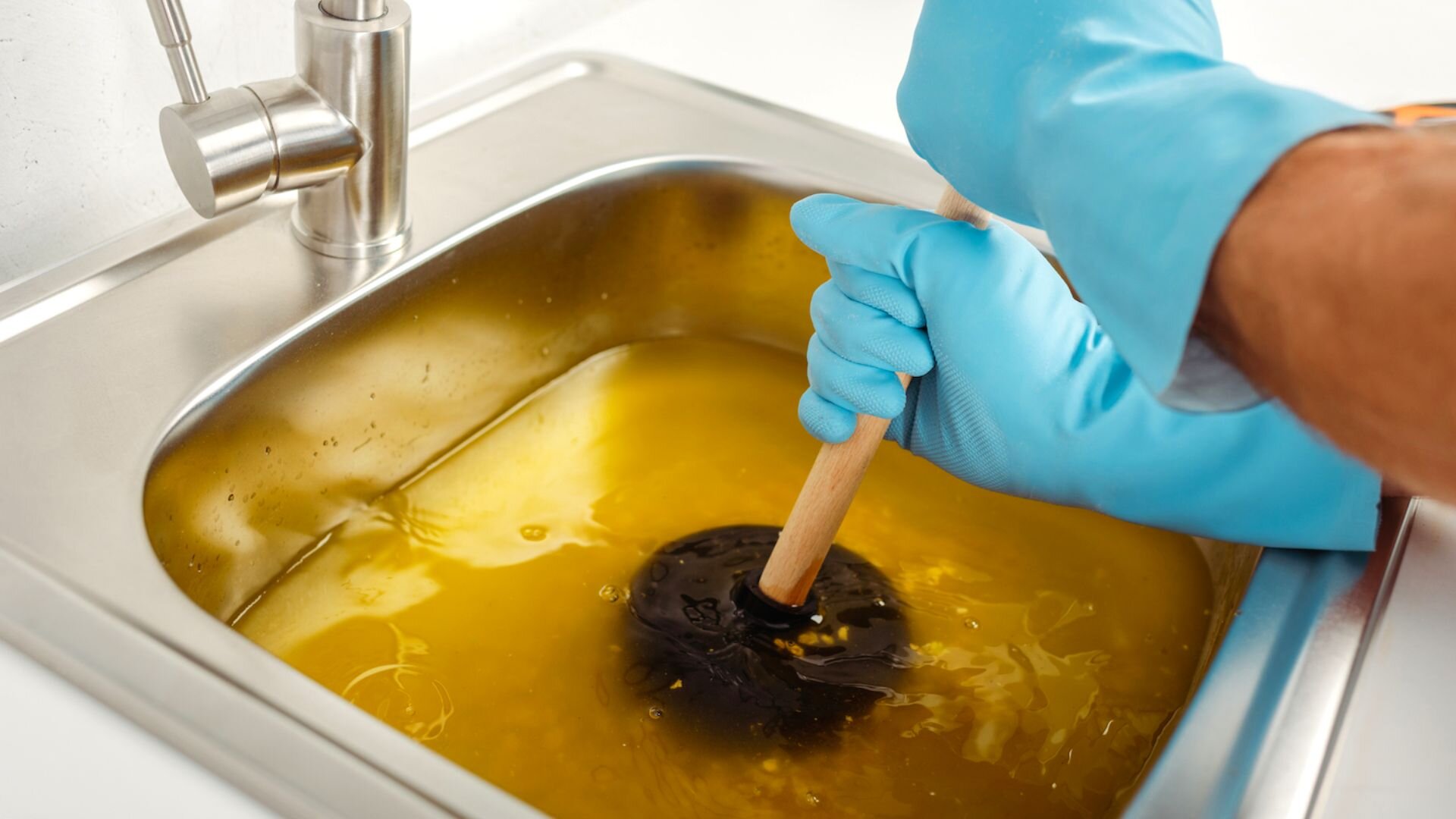

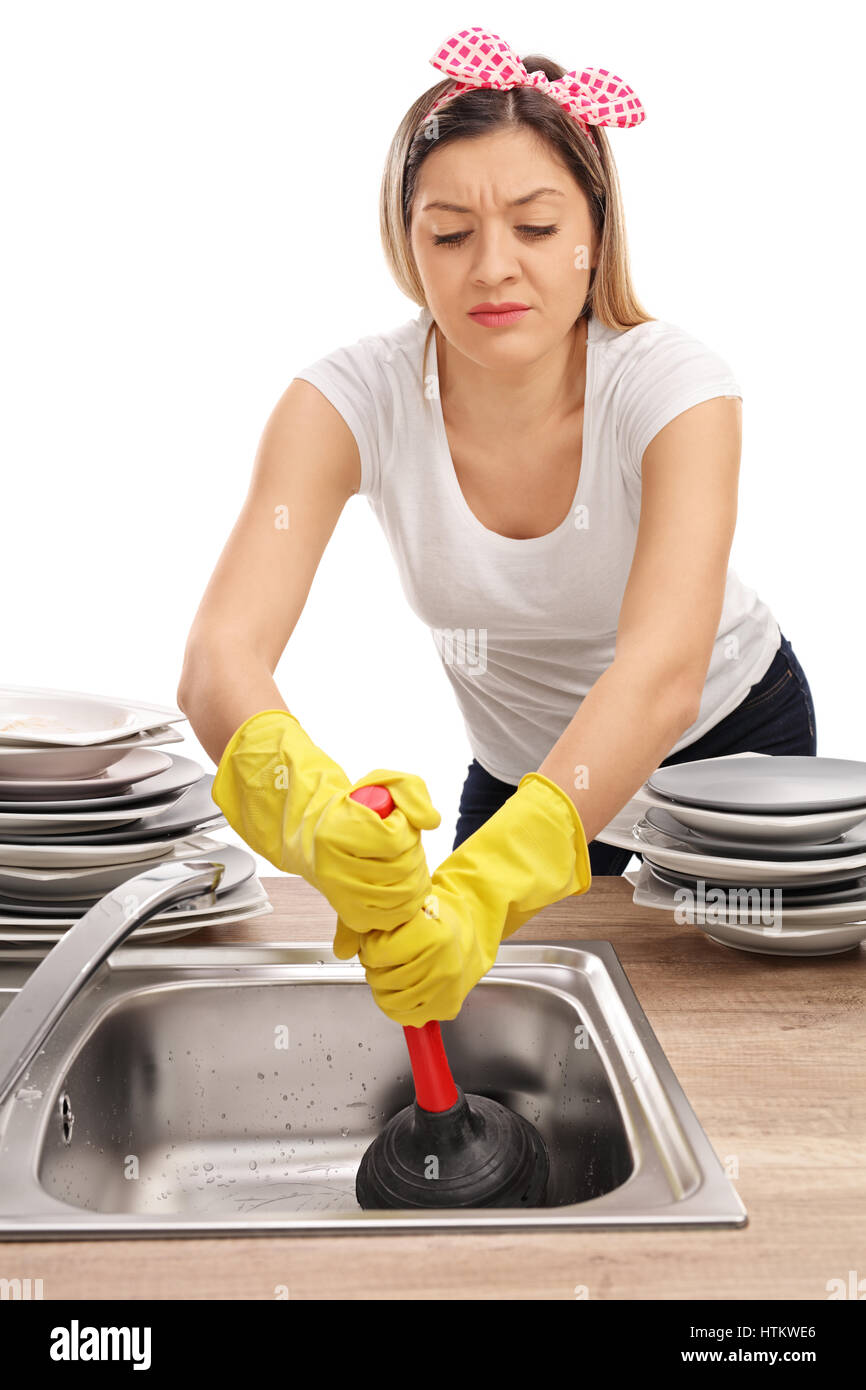
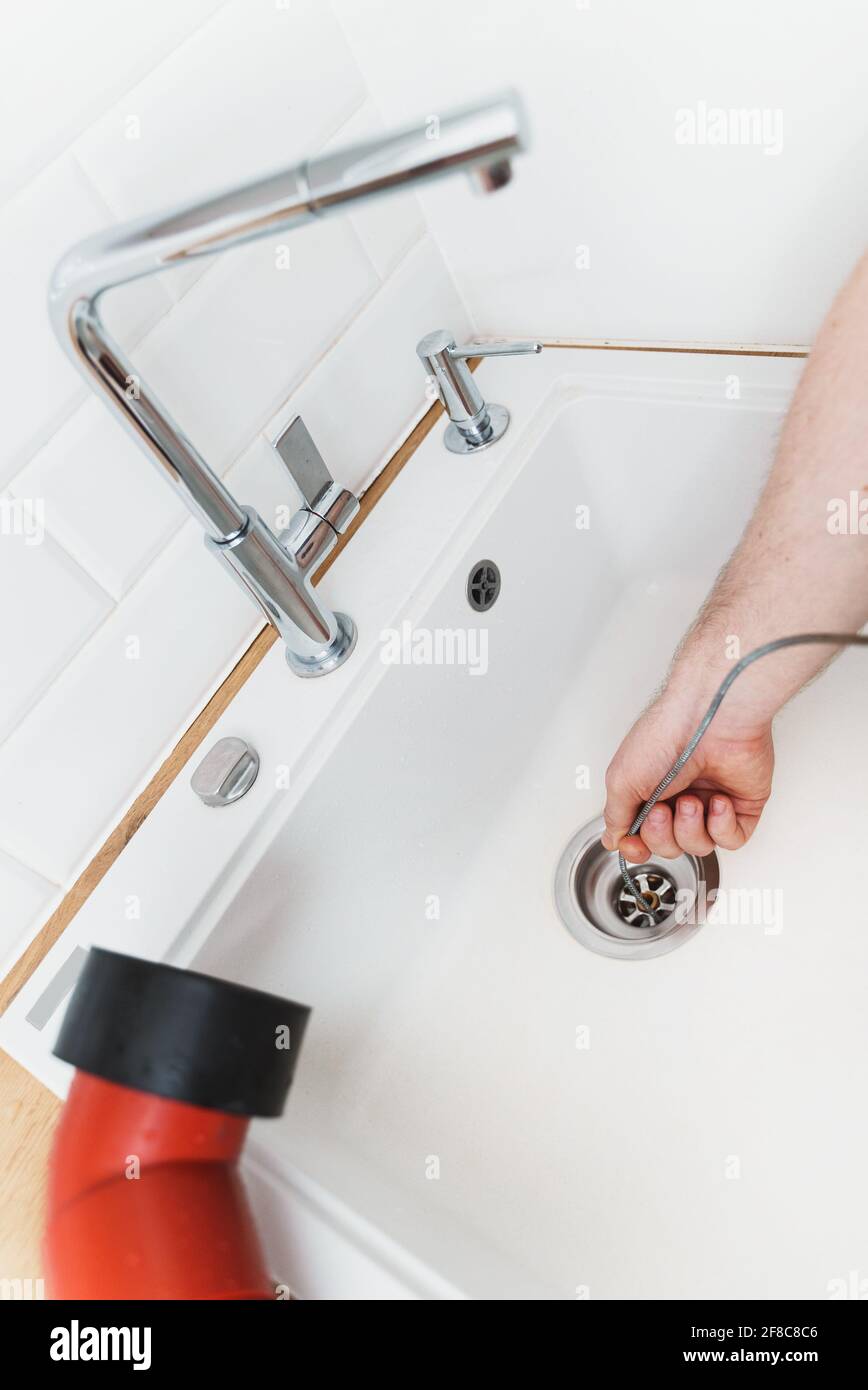

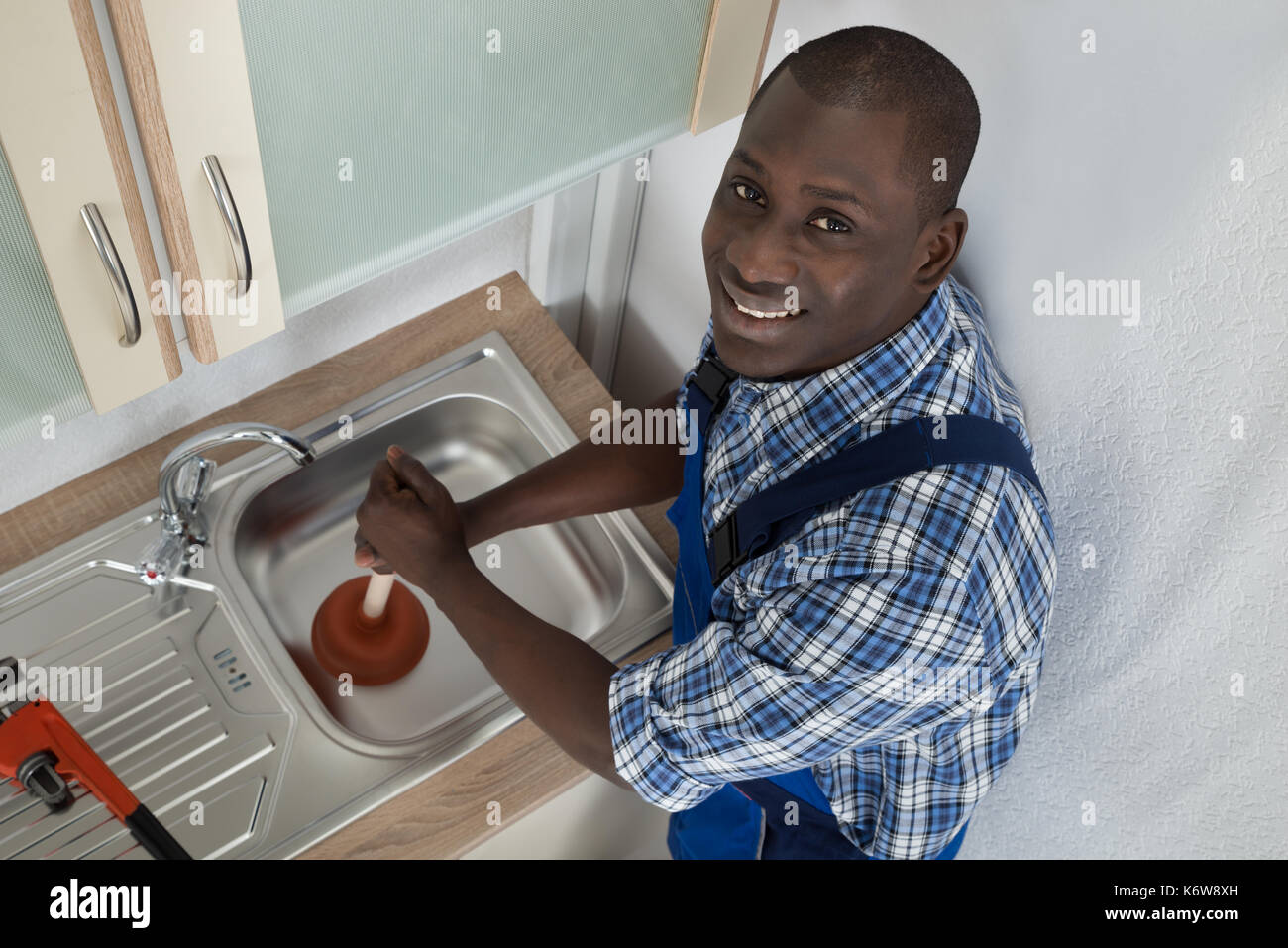





/woman-wearing-yellow-washing-up-gloves-to-unblock-sink-using-plunger-close-up-131987463-5887cfc03df78c2ccd92ec9e.jpg)







:max_bytes(150000):strip_icc()/how-to-use-a-sink-auger-1825090-hero-70d39960647643819dbb4c1f3a05e929.jpg)


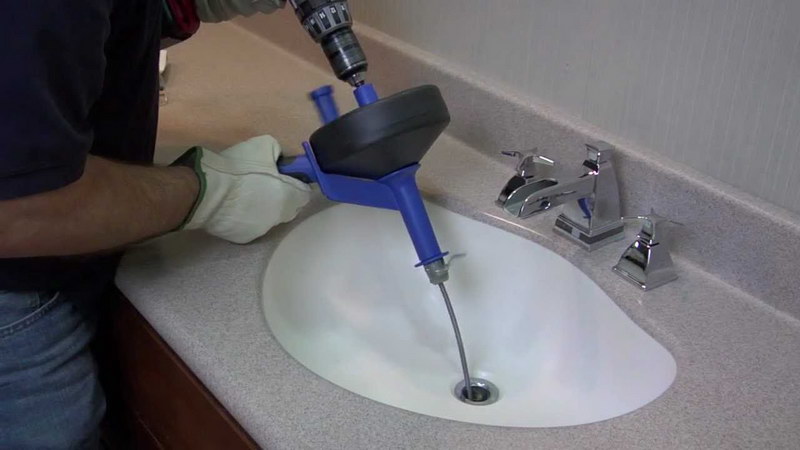



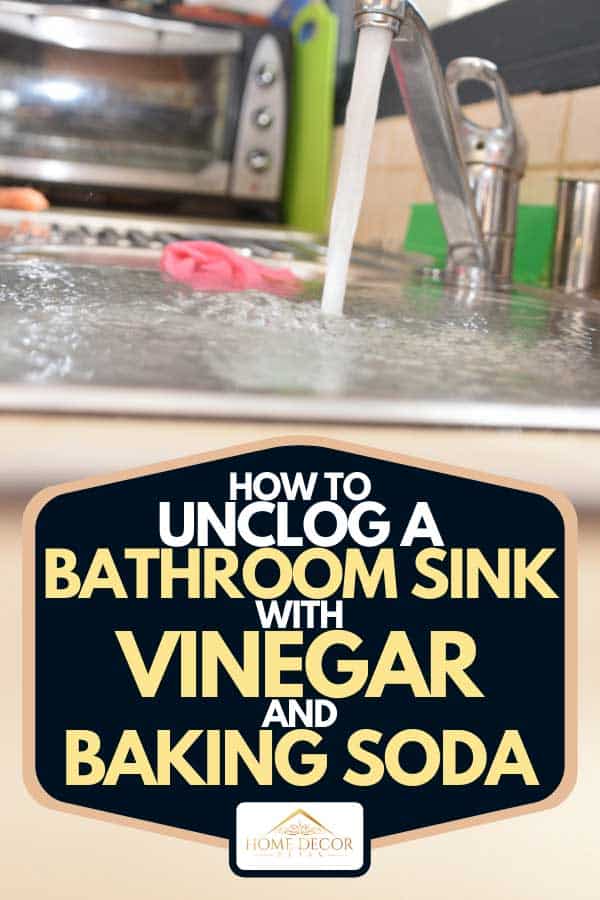

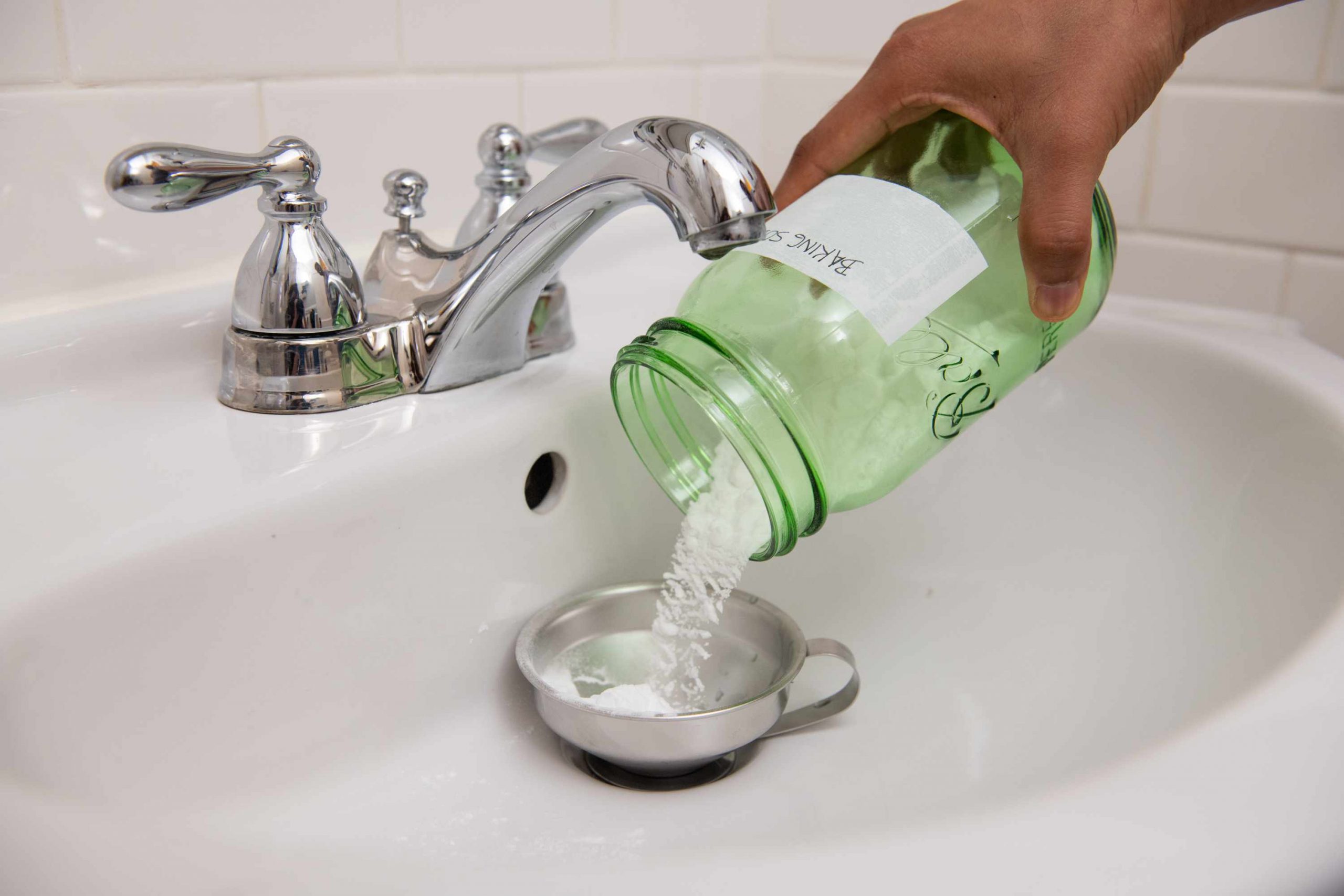
:max_bytes(150000):strip_icc()/freshen-and-unclog-drain-with-baking-soda-1900466-22-bbf940b70afa4d5abef0c54da23b1d3f.jpg)
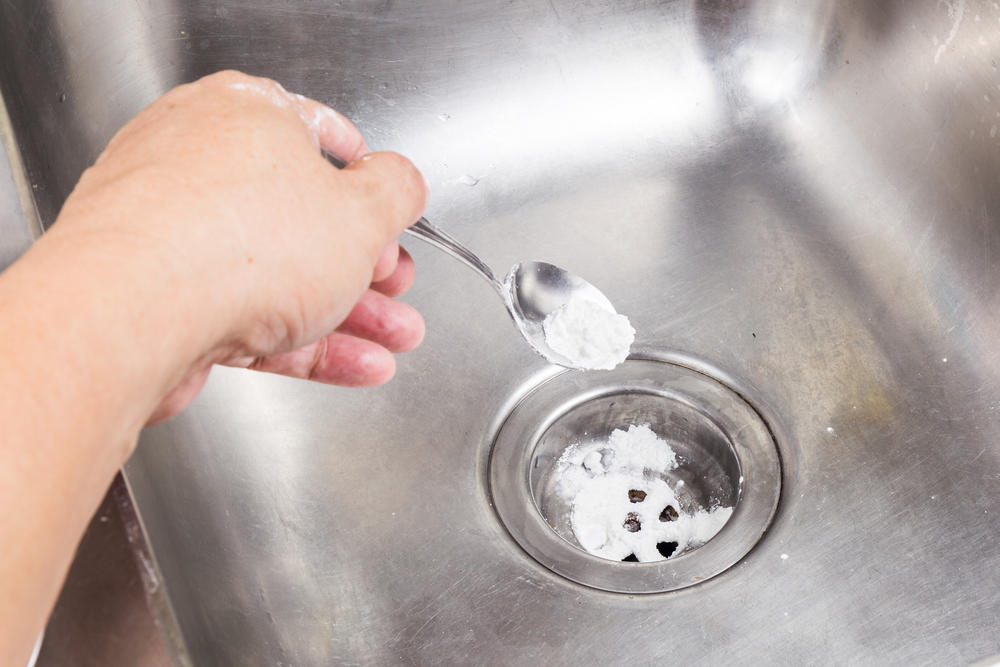
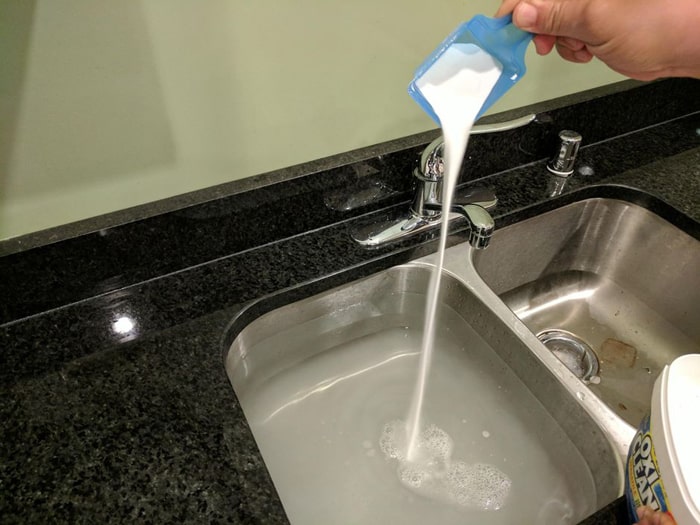
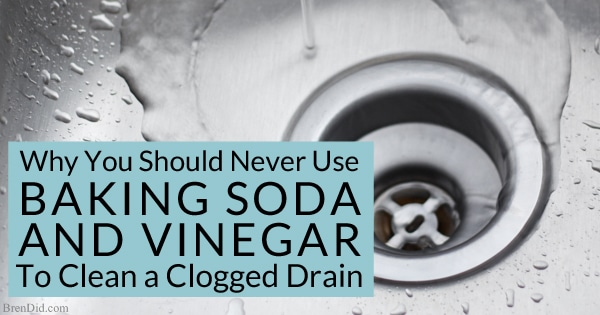

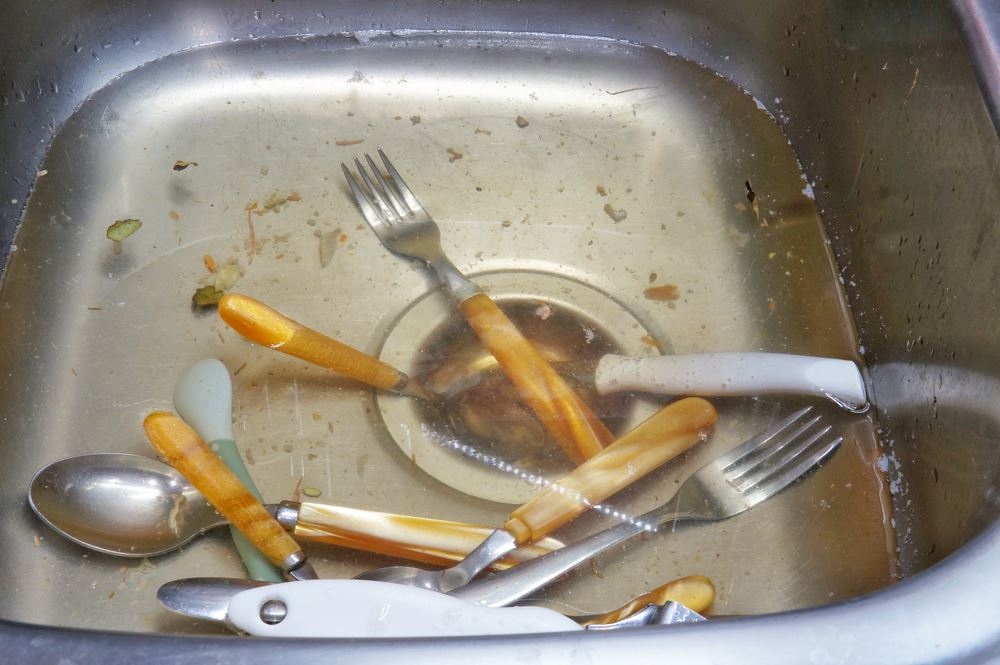
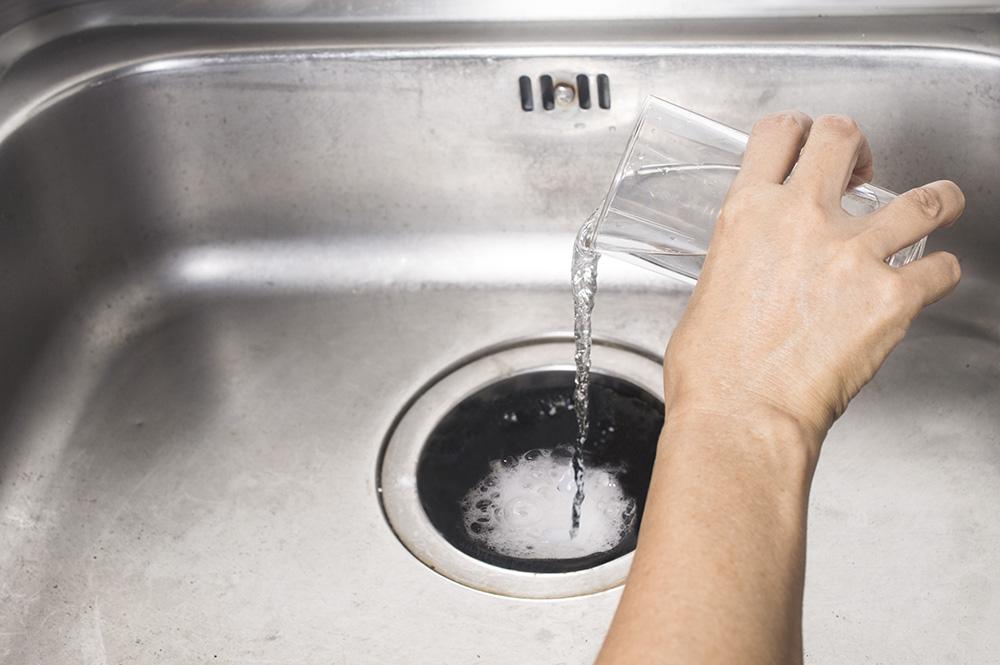

:max_bytes(150000):strip_icc()/freshen-and-unclog-drain-with-baking-soda-1900466-18-1a5b5da01939471ca8f8823865bd1ce8.jpg)
